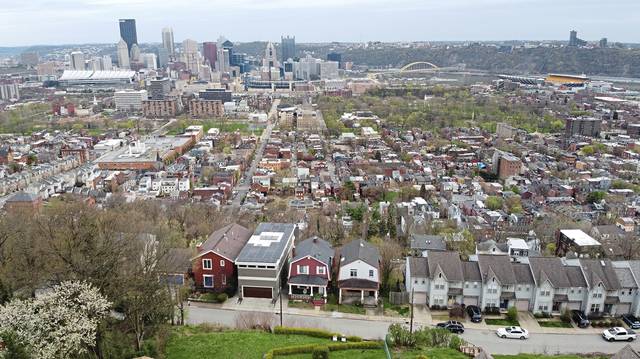Pennsylvania sets out to tackle disparities highlighted by pandemic
Health and social services officials hope a data-driven approach — one focused not on equality, but equity – will help begin to move the life-expectancy needle higher in some of Pennsylvania’s most disparate areas.
The goal of the region-based coalitions, called Regional Accountable Health Councils, is in essence to lift up communities that have seen generations of divestment brought on by systemic racism, particularly the practice of redlining, said state Secretary of Human Services Teresa Miller.
Health and wellness disparities among communities are nothing new, though they have been magnified since the start of the covid-19 pandemic.
“The pandemic has laid bare both the opportunity and obligation for us at the state level to do work necessary to bring about change and make a positive difference for these communities and start to rectify generations of inequities,” Miller said.
Redlining is the denial of services or goods by a government or private sector based on the neighborhood in which a person lives or their race. The term has historically been applied to financial institutions and their denial of credit, loans and other discriminatory lending practices.
“The jobs left, the grocery stores left – you can see it in every single metric today, and life expectancy is how they all come together,” Miller said.
Dr. Doug Jacobs, chief innovation officer for the Department of Human Services and leader of the RAHC on the state level, gave an example out of Philadelphia. In one census tract, the life expectancy is about 63 years — and in one a mile south, it’s 87.
“We’ve been doing this for years,” he said of the idea that both areas should be treated exactly the same. “These are the results that we have today.”
Pretending areas torn by racism and redlining are the same as other areas has created the disparities, he said.
“Equity is really lifting up those communities that have had that historic divestment, and equality is treating everybody the same,” Jacobs said. “Equality was the goal for a long time. But we know if we just don’t do more for these communities, we’re going to have the same health outcomes we’ve been having for generations.”
While the Regional Accountable Health Councils work to bring equity long-term to underserved areas of the state, the Department of Health is leading its own efforts to make the covid vaccine distribution an equitable one as well.
It is a dire and time-sensitive battle: Federal data show Black Americans are nearly three times as likely to be hospitalized with covid and nearly twice as likely to die.
“Studies have shown that public health crises typically have more severe impacts on underserved populations, making them more vulnerable to severe illness and death,” said Brian Lentes, director of operational excellence in the Department of Health.
State health officials have pledged an equitable vaccination process, but information surrounding the numbers that could show whether that’s happening or not remains elusive.
The dearth of race and ethnicity data predates the vaccine. Since the early months of the pandemic, there have been dueling trends of the virus ravaging Black communities at a higher rate alongside an overall lack of data about the race of the pandemic’s victims.
A similar issue emerged as vaccinations increase across the state and country. A Carnegie Mellon University study late month analyzed 300,000 survey responses collected between Jan. 9 and 15. While the results showed 9.3% of white Americans said they received the vaccine, only 6.4% of African Americans and 6.8% of Hispanic Americans said they had.
As of Wednesday, state data showed that roughly 770,200 White Pennsylvanians were fully vaccinated and 854,500 were partially vaccinated. Among Black residents, just over 24,000 are fully vaccinated and 41,000 partially vaccinated.
In a separate “unknown” category, there are around 170,200 listed as fully vaccinated and just under 200,000 partially vaccinated.
That’s despite an order dictating health care providers give the state complete data on race and ethnicity for each positive covid test – and a parallel order more recently for vaccine providers.
Some of the issues making the vaccination process more equitable come from the distribution process itself, while some stem from a distrust and hesitancy among Black adults stemming from America’s history of racism in medical research.
That was the case among the Rev. De Neice Welch’s congregation at Bidewell Presbyterian Church on Pittsburgh’s North Side.
“Fighting against generalized suspicion against the health system, and fighting against the history of unethical experimentation directed against the African American population in our nation, many Black citizens, including myself, had decided against taking the vaccine,” she said Tuesday during a state Department of Health press briefing.
“We as a community could not trust the information coming from our national elected officials nor did we trust the information circulating in the streets,” she said.
She said she and her congregants made it a point to do research, looking to state data and a frontline health care worker within their own congregation for the truth.
Welch said she and her husband both received the vaccine so as to model what they thought was right. She said more than 40% of the congregation has been vaccinated, and they remain respectful of those who choose not to be vaccinated.
Remove the ads from your TribLIVE reading experience but still support the journalists who create the content with TribLIVE Ad-Free.

